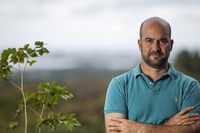
Barack Obama creates the first marine sanctuary in the Atlantic Ocean
Il presidente statunitense ha istituito una nuova riserva marina per proteggere una vasta area del Pacifico, caratterizzata da canyon sottomarini ricchi di biodiversità.
Il presidente statunitense ha istituito una nuova riserva marina per proteggere una vasta area del Pacifico, caratterizzata da canyon sottomarini ricchi di biodiversità.
Off the coasts of Hawaii, the President of the United States has quadrupled the area of the Papahanaumokuakea Marine National Monument, a protected marine reserve established by George W. Bush earlier in 2006. This is part of the legacy Obama wants to hand on his successor. The existing marine reserve will be expanded from 357,000 to
Grindadráp is the local name for a yearly event that sees the people of the Faroe Islands, a self-governing archipelago under Denmark, hunt long-finned pilot whales as well as other species of cetaceans such as bottlenose dolphins, white-sided dolphins and Risso’s dolphins. These species aren’t on the International Union for Conservation of Nature (IUCN)’s list of endangered animals, but
For the first time ever a plane powered by solar energy has completed a round-the-world trip, flying 40,000 km without fuel. Watch the video of its last, triumphal landing.
Quasi in 150mila hanno firmato un appello del Wwf al governo del Belize: salvi la seconda barriera corallina più grande del mondo e la Grande Voragine Blu.
Il pianista italiano ha aderito alla campagna di Greenpeace per la difesa dell’Artico e si è esibito in un’insolita performance fra i ghiacci del Polo Nord.
The Bramble Cay melomys was the only mammal endemic to the Great Barrier Reef. The rodent has gone extinct because of rising sea levels.
Lo sbiancamento avrebbe ucciso il 35 per cento dei coralli che compongono il sito australiano classificato Patrimonio mondiale dell’Umanità.
Winner of the Goldman Environmental Prize, Luis Jorge Rivera Herrera tells LifeGate about his battle to protect endangered leatherback turtles and the Puerto Rican coastline.
“Blow at 2 o’clock!”, shouts a member of the research team onboard the motorsailer Pelagos. For five endless minutes everyone has been scanning the sea in a state of alert silence, looking for a white puff to indicate the blow of a male sperm whale coming to the surface to breathe and rest. The researchers








